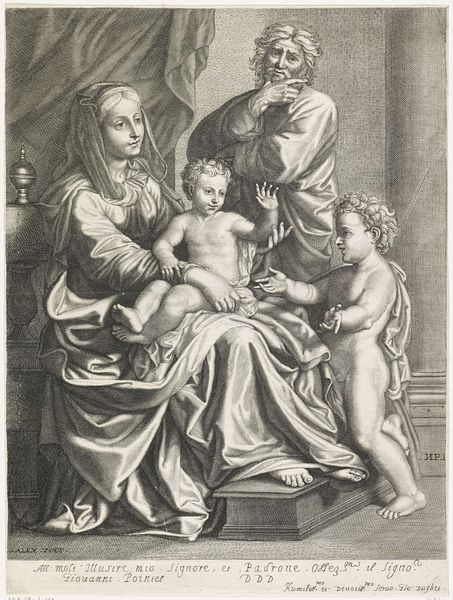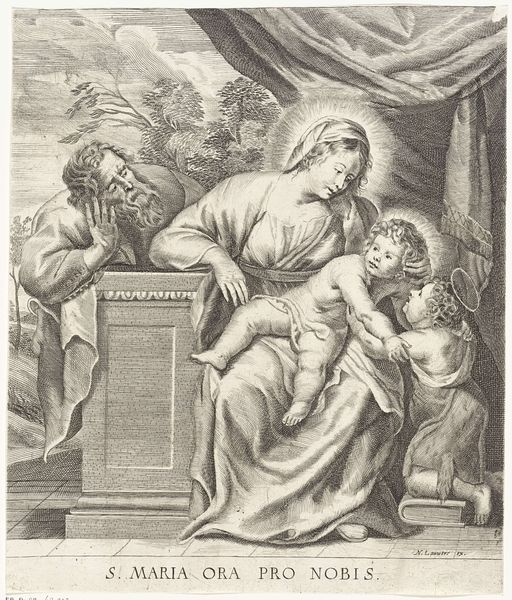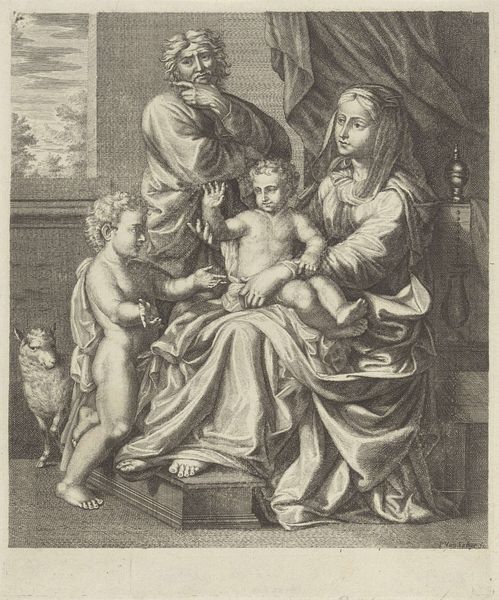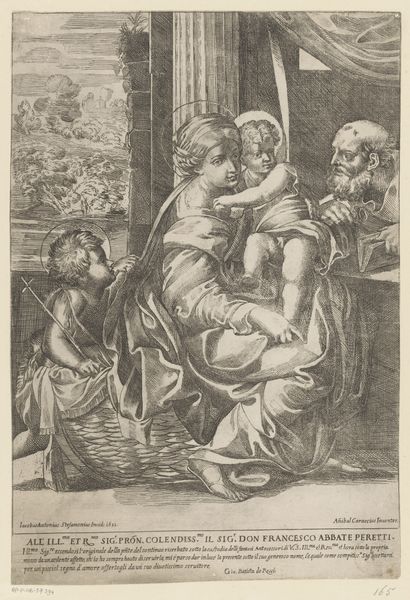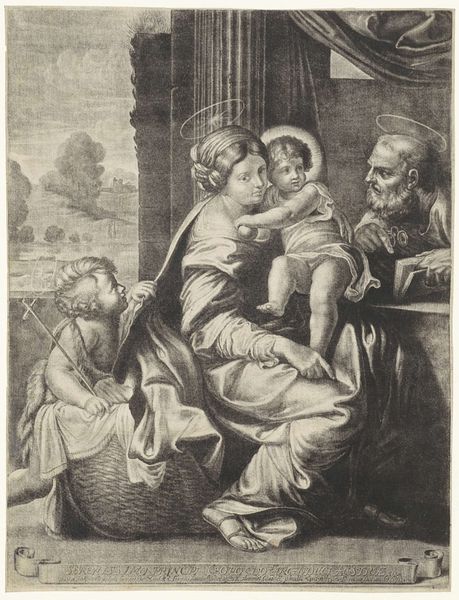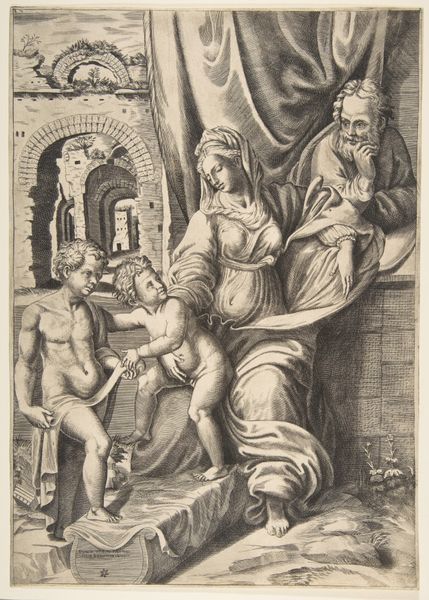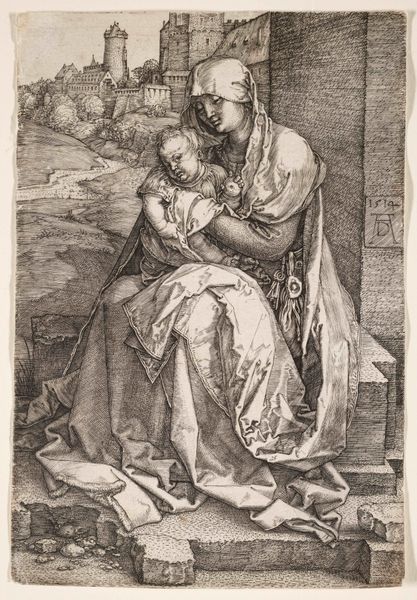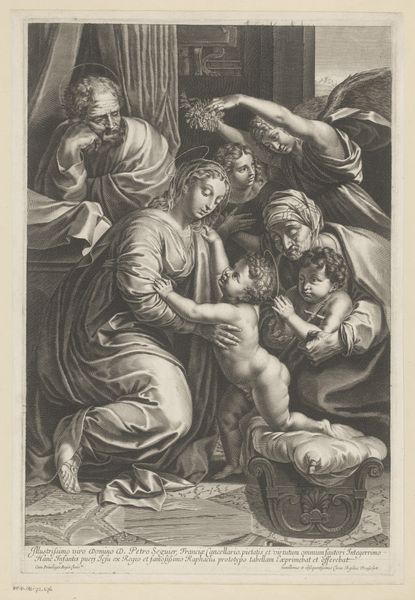
print, engraving
#
baroque
# print
#
figuration
#
history-painting
#
engraving
Dimensions: height 259 mm, width 275 mm
Copyright: Rijks Museum: Open Domain
Art Historian: We're looking at a piece titled "Christus Kroont Maria," or "Christ Crowns Mary." It’s an engraving from 1673, crafted by Louis Abry. Artist: Right away, I'm struck by the somber mood. Even though it depicts a coronation, there’s a quiet melancholy in Mary's downward gaze and clasped hands. It’s as if the weight of the crown is already sinking in. Art Historian: Yes, the act of crowning in religious art is deeply symbolic. It doesn't just represent status, but also the culmination of earthly virtue, sacrifice, and a divine embrace. The Holy Trinity and its attendants in particular. Mary's acceptance of the crown signifies her complete devotion to God’s plan. Artist: That melancholy then, perhaps isn't sorrow. I can’t help feeling the composition looks like Abry almost intended that. Is it about knowing what lies ahead, both in earthly pain and heavenly reward? Also, this detail—it’s almost eerie how present the artist's hand is here with the use of engraving! Look how sharply that burin cuts out figures from blankness! It's stark but oddly moving too. Art Historian: You’ve hit upon a key element there. The baroque aesthetic frequently employed drama and high contrast. Look how the light falls—or, more accurately, is etched—to illuminate key figures while leaving others in shadow. This isn't simply about telling a story but evoking feeling, inspiring piety, and a sense of awe in the viewer. Even those supporting angelic figures act as reminders of Mary’s status, blessed among women by divinity. Artist: I'm definitely picking up on the emotive thread, but in terms of a story, I don't feel the emotion, do you? I suppose, in that time it may have acted almost as a prompt—directing those with no voice in an inflexible world towards grace through worship? It's almost an instructive guide to being. Art Historian: Precisely! Art such as this serves as an instructive mirror—reflecting back to viewers not just an idealized image, but a model for behavior, piety, and submission to the divine will. Artist: Thanks to its powerful composition it offers much for modern day to enjoy. I do feel more contemplative now that you explained what's happening and its role with contemporary worshippers. A lot more to appreciate here, thank you! Art Historian: And for me, returning to Abry's work reaffirms the continuing power of images to move, instruct, and connect us with centuries of human yearning. Thank you for lending fresh eyes!
Comments
No comments
Be the first to comment and join the conversation on the ultimate creative platform.
